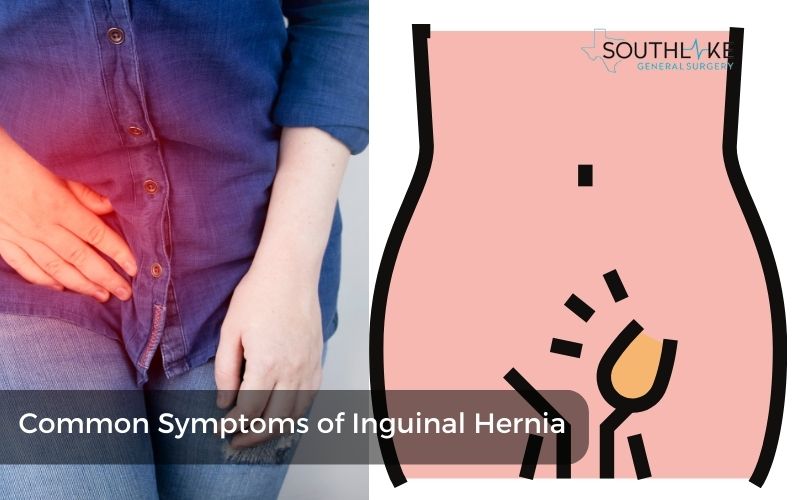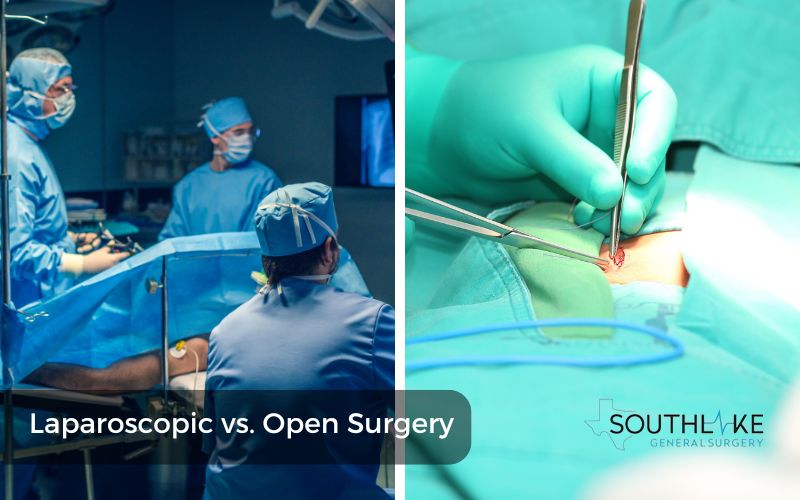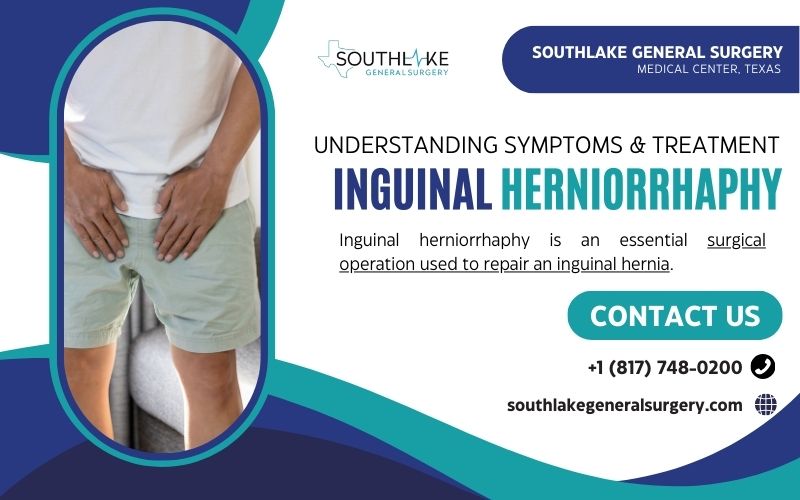Inguinal herniorrhaphy is an essential surgical operation used to repair an inguinal hernia. It plays a vital role in relieving symptoms and preventing complications.
In the United States, inguinal hernia repair is a frequently performed surgical procedure, with an estimated 800,000 procedures conducted annually. Inguinal hernias are the predominant form of abdominal wall hernias, constituting 75% of all instances. Inguinal hernias occur most frequently in two age groups: children around 5 years old and adults over the age of 70.
An inguinal hernia arises when tissue, such as a section of the intestine, bulges through a vulnerable location in the abdominal muscles located in the groin region. It has the potential to cause serious consequences, such as a strangulated hernia, which may require immediate surgical intervention.
Recognizing the signs early, along with prompt medical attention, can prevent serious complications associated with this condition, such as small intestine obstruction. Let’s explore inguinal hernias more thoroughly.
Key Highlights
- Definition and causes of inguinal hernia
- Common symptoms and risk factors to watch out for
- importance of early diagnosis and seeking medical advice
- Overview of non-surgical and surgical treatment options
- Postoperative care and recovery process
- Recurrence of inguinal hernias can be prevented by making changes to one’s lifestyle.
Understanding Inguinal Hernias
Inguinal hernias arise when abdominal tissues protrude through a vulnerable location in the lower abdominal wall, usually in the groin region near the inguinal canal.
Distinguishing between direct and indirect inguinal hernias aids in identifying the suitable technique for care, whether it be hernia repair surgery or non-surgical methods.
Definition and Overview
An inguinal hernia is the protrusion of tissue, such as a portion of the intestine, through a weakened place in the abdominal wall located in the groin region. This weak spot is commonly seen along the inguinal canal, which is responsible for carrying the spermatic cord in men.
This form of hernia has the potential to result in severe problems, such as a strangulated hernia, and typically necessitates inguinal hernia treatment.
Understanding the basics of this condition, including the role of the spermatic cord, is crucial for timely diagnosis and treatment to prevent further complications. Patients need to be aware of the symptoms and risks associated with inguinal hernias to seek appropriate medical attention promptly.
Why Knowing about Inguinal Hernias Matters
Understanding the importance of inguinal hernias is crucial in early identification and timely treatment. A lack of awareness can lead to complications such as strangulation, necessitating emergency surgery. By recognizing symptoms and seeking medical attention promptly, individuals can prevent serious consequences.
Knowing the difference between hernia types and associated risks empowers individuals to make informed decisions about their health. Educating oneself on inguinal hernias can lead to early intervention and better outcomes, highlighting the significance of awareness.
Distinguishing Direct and Indirect Inguinal Hernias
Direct and indirect inguinal hernias have different origins. A direct hernia occurs when there is a weakness in the abdominal wall, allowing it to protrude. An indirect hernia goes into the inguinal canal through a natural opening.
Direct hernias usually happen in older people with weak muscles, while indirect ones are common in younger individuals and can be present from birth. Knowing these differences is vital for the correct diagnosis and treatment.
Recognizing the Symptoms
Inguinal hernias manifest with a visible bulge in the groin area, often more noticeable when coughing or straining. Discomfort or pain in the lower abdomen or groin, especially when lifting heavy objects, may indicate an inguinal hernia.
Symptoms of an inguinal hernia can worsen throughout the day or when standing for long periods of time. It’s crucial to seek medical attention if you experience persistent discomfort, swelling, or a visible bulge in the groin to prevent potential complications like a strangulated hernia.
Common Symptoms of Inguinal Hernias

Pain in the groin when bending or lifting heavy things is a common symptom of inguinal hernias. Additionally, one may observe a protrusion in the groin area when in an upright position and experience discomfort in the abdominal region.
These signs can get worse with activities like coughing. If you have these symptoms, see a doctor quickly to avoid complications.
When to Seek Medical Attention
If you have ongoing pain or see a lump in the groin that doesn’t go away when lying down, see a doctor promptly. Also, if you have nausea, vomiting, or trouble using the bathroom, don’t wait to see a healthcare provider.
Not paying attention to these signs can cause issues like a strangulated hernia that requires urgent surgery to fix. Make sure to get checked to avoid more problems and get timely hernia treatment.
Exploring the Causes
Inguinal hernias arise from areas of weakness in the abdominal wall, typically close to the groin area. These weak spots may cause a protrusion of abdominal contents, like a hernia sac, into the inguinal canal.
Factors like heavy lifting, ongoing coughing, or straining during bowel movements can lead to inguinal hernias. Understanding these causes is crucial to prevent this condition and get prompt medical help.
Common Causes of Inguinal Hernias
Hernias in the groin area can occur due to various factors
- Common causes include a weakened abdominal wall, leading to a protrusion in the inguinal canal
- Factors such as heavy lifting, chronic coughing, or straining during bowel movements can increase the risk of developing an inguinal hernia
- Additionally, factors like a congenital predisposition or previous abdominal surgeries can also contribute to the occurrence of this condition
Risk Factors for Developing an Inguinal Hernia
Inguinal hernias can arise due to certain factors:
- Obesity
- Chronic coughing
- Family history of hernias
- Aging
- Being male
Other factors that can increase the risk include:
- Smoking
- Heavy lifting
- Pregnancy
Conditions that lead to increased abdominal pressure, such as:
- Constipation
- Fluid in the abdominal cavity
This may contribute to the development of hernias, as well as having a persistent, heavy cough. Understanding these risk factors can help in preventive measures and early detection.
Diagnosis of Inguinal Hernias
Healthcare providers find inguinal hernias by examining the body. Tests like ultrasound or MRI can confirm it. They also ask about symptoms and risks. Sometimes a CT scan is needed for more details. A correct diagnosis is vital for the right treatment.
Professional Diagnosis Methods
To diagnose inguinal hernias accurately, healthcare providers typically conduct a thorough physical examination, focusing on the groin area and abdominal wall.
- Imaging tests like ultrasound or MRI may be recommended for a detailed view.
- In some cases, a CT scan can provide further insights into the hernia.
- Your healthcare provider may also review your medical history to assess potential risk factors and determine the most appropriate course of action.
These methods help in identifying the type and severity of the hernia for effective treatment.
Available Treatment Options
Surgical treatments for inguinal hernias include laparoscopic surgery and open surgery, which can be performed under local anesthesia. Laparoscopic surgery involves making several small incisions, through which a piece of mesh is inserted to cover the weak spot. This technique is less invasive and promotes quicker recovery.
Open surgery, on the other hand, involves making a larger incision to push the hernia back into place and reinforce the abdominal wall with stitches or mesh.
Non-surgical approaches may be recommended for smaller hernias or those unfit for surgery.
Inguinal Hernia Treatment Explained: Laparoscopic Surgery and Open Surgery

There are two common types of surgery for inguinal hernia repair or inguinal herniorrhaphy : laparoscopic surgery and open surgery.
- Laparoscopic surgery is performed through small cuts using a camera to fix the hernia without extensive incisions, resulting in a faster recovery time.
- Open surgery involves a larger incision directly over the hernia, giving the surgeon more direct access to perform the repair.
Both treatments are efficacious in rectifying the hernia, and the selection of surgery generally relies on the distinct attributes of the hernia and the surgeon’s inclination.
How is an inguinal hernia repaired during surgery?
Inguinal herniorrhaphy is a surgical procedure to repair a groin area hernia. The National Institutes of Health recommends this surgery for patients with symptomatic hernias to prevent complications such as bowel obstruction or strangulation of the intestine.
The procedure involves pushing the bulging tissue back into the abdomen and repairing the weakened abdominal wall with stitches or a mesh patch.
Non-Surgical Approaches

When surgery is not a viable option, non-surgical approaches for inguinal hernias may be considered. These methods typically involve:
- Monitoring and observing the situation closely while being overseen by a healthcare professional.
- Lifestyle modifications like avoiding heavy lifting and managing symptoms through over-the-counter pain medication can help alleviate discomfort.
- Close monitoring of the hernia for any changes or complications is essential.
- Non-surgical approaches, including observation of asymptomatic patients with small hernias, aim to control symptoms and prevent the hernia from worsening, offering an alternative to invasive intervention.
Preparing for Surgery

Before undergoing inguinal herniorrhaphy, preparation is crucial. Follow pre-surgery guidelines provided by your healthcare provider, which may include fasting instructions and medication adjustments. Ensure that you arrange transportation for the day of surgery and have a support system in place for post-operative care.
Be sure to let your surgeon know about any preexisting diseases and medications you are taking. Understanding the procedure and potential risks will help alleviate anxiety and aid in a smoother recovery process.
How to Prepare for Inguinal Herniorrhaphy
Prior to inguinal herniorrhaphy, ensure that you:
- Fast as instructed by medical staff
- Arrange for transportation post-surgery
- Discuss medications with your healthcare provider, including blood thinners
- Clear your schedule for rest during recovery
- Your home is comfortable and prepared for your return
- Follow preoperative guidelines provided by your surgeon for optimal outcomes
- Stay informed about the procedure to alleviate any concerns
Surgery Day Preparation: What to Expect
On the day of your inguinal hernia repair surgery, expect to undergo pre-operative procedures such as signing consent forms, changing into a hospital gown, and being prepared for the operation. You will meet with the anesthesia team to discuss the type of anesthesia planned, either general anesthesia or local anesthesia.
Once in the operating room, you’ll be positioned for the surgery, which may involve small cuts and the placement of a mesh to reinforce the weak spot in the abdominal wall.
Post-Surgery Recovery After Groin Hernia Treatment

Following inguinal herniorrhaphy, a crucial phase is post-surgery recovery. Patients should expect some discomfort, swelling, and restricted activity initially. It’s vital to follow the surgeon’s instructions meticulously for a smooth recovery process.
- Gentle movements aid in healing
- Do not exert yourself too much in the first few weeks.
- Promptly report any persistent pain, redness, or abnormal symptoms to the healthcare provider
By adhering to post-operative guidelines, patients can enhance their recovery and prevent potential complications.
The Recovery Process
After inguinal herniorrhaphy, the recovery process is crucial.
- Patients typically experience mild discomfort, swelling, and restricted activities post-surgery.
- Following the surgeon’s instructions exactly is critical for a speedy recovery.
- Medications can be used to control mild pain.
- Avoiding heavy lifting or strenuous activities is advised to prevent complications.
- Patients are encouraged to gradually resume daily activities under their healthcare provider’s supervision.
- Monitoring for any unusual symptoms, like excessive pain or redness, is important during the recovery phase.
Tips for a Smooth Recovery
After inguinal herniorrhaphy, follow these recovery tips for a smooth recovery.
- Ensure that you rest adequately and avoid strenuous activities.
- Gradually ease back into daily routines and light exercises.
- Maintain a balanced diet rich in nutrients, aiding the healing process.
- Ensure adequate hydration and attend all subsequent appointments for thorough monitoring.
- Be vigilant for any unusual symptoms and contact your healthcare provider promptly if concerns arise.
These methods will facilitate a successful recovery following inguinal hernia repair surgery.
Potential Complications and Risks
Complications of inguinal hernia repair or inguinal herniorrhaphy can include infection, bleeding, or chronic pain. Risks may involve injury to surrounding structures like blood vessels or nerves, leading to potential long-term issues. Adverse reactions to anesthesia are possible. While uncommon, serious complications such as hernia recurrence or bowel obstruction can occur.
Understanding these risks is crucial for informed decision-making and post-operative care. Discuss any concerns with your healthcare provider to mitigate potential complications effectively.
Understanding the Risks of Surgery
Understanding the risks of surgery is crucial before undergoing inguinal hernia repair. Complications such as infection, bleeding, or damage to surrounding structures like blood vessels or nerves may arise. Furthermore, there is a potential for hernia recurrence or the rare occurrence of chronic pain post-surgery.
A detailed discussion with your healthcare practitioner about these risks is crucial to making a well-informed decision about your treatment plan. Ensure you adhere meticulously to the before and post-operative instructions to reduce these potential risk factors.
How to Mitigate Potential Complications
Follow your surgeon’s instructions diligently to mitigate potential complications post inguinal hernia repair.
- During recovery, don’t do any heavy lifting or other strenuous tasks
- Keep the incision site clean and monitor for signs of infection
- For a thorough assessment, attend all subsequent appointments
- Notify your healthcare provider immediately if you experience severe pain, persistent fever, or any unusual symptoms
Adhering to post-operative care guidelines is crucial in reducing the risk of complications and ensuring a successful recovery.
Conclusion
In conclusion, inguinal hernias require prompt attention and appropriate treatment to prevent potential complications. Seeking medical advice for any persistent symptoms is crucial.
Surgery, whether laparoscopic or open, is often necessary for hernia repair. Understanding the risks associated with surgery is vital, and patients should follow post-operative care instructions diligently.
Make An Appointment

Dr. Valeria Simone MD, at Southlake General Surgery in Texas, USA, specializes in hernia repair. To schedule a consultation or treatment, you can contact our healthcare expert today at +1 (817) 748-0200. Dr. Simone provides expert care for a range of hernias, including inguinal hernias, ensuring individualized treatment plans tailored to each patient’s needs.
Trust in the experience and professionalism of Dr. Simone specializes in providing comprehensive and compassionate treatment for abdominal wall conditions. Contact us today to address your hernia concerns and explore treatment options.
Frequently Asked Questions
How Successful Is Inguinal Hernia Surgery?
Inguinal hernia surgery typically has a good success rate, with a minimal likelihood of recurrence. The success rates of surgeries differ based on the specific procedure and individual circumstances. Discuss with your healthcare provider for personalized information.
Who does inguinal hernia affect?
Inguinal hernias commonly affect men, especially those with a family history or who engage in activities that increase abdominal pressure, like heavy lifting or chronic coughing. Women can also develop inguinal hernias, typically due to pregnancy or obesity.
What is the most effective treatment for Inguinal Hernia Surgery?
The best treatment for inguinal hernia surgery typically involves either laparoscopic or open surgery, where the herniated tissue is pushed back and the weakened abdominal wall is reinforced. Your surgeon will recommend the most suitable approach based on your specific case.
Medically Reviewed By: Dr. Valeria Simone MD
Board-certified General Surgeon at Southlake General Surgery, Texas, USA.
Follow us on Facebook and YouTube.
References:
- CT Scans. medlineplus.gov/ctscans.html.
- X-Rays. medlineplus.gov/xrays.html.
- Nyhus, Lloyd M., et al. “Inguinal Hernia.” Current Problems in Surgery, vol. 407–450, no. 6, 1 June 1991, https://doi.org/10.1016/0011-3840(91)90028-n.
- Inguinal Hernia Repair: MedlinePlus Medical Encyclopedia. medlineplus.gov/ency/article/007406.htm.
- Hassler, Kenneth R., et al. “Open Inguinal Hernia Repair.” StatPearls – NCBI Bookshelf, 12 Sept. 2022, www.ncbi.nlm.nih.gov/books/NBK459309.
- LeBLANC, Kim Edward, et al. “Inguinal Hernias: Diagnosis and Management.” AAFP, 15 June 2013, www.aafp.org/pubs/afp/issues/2013/0615/p844.html.

